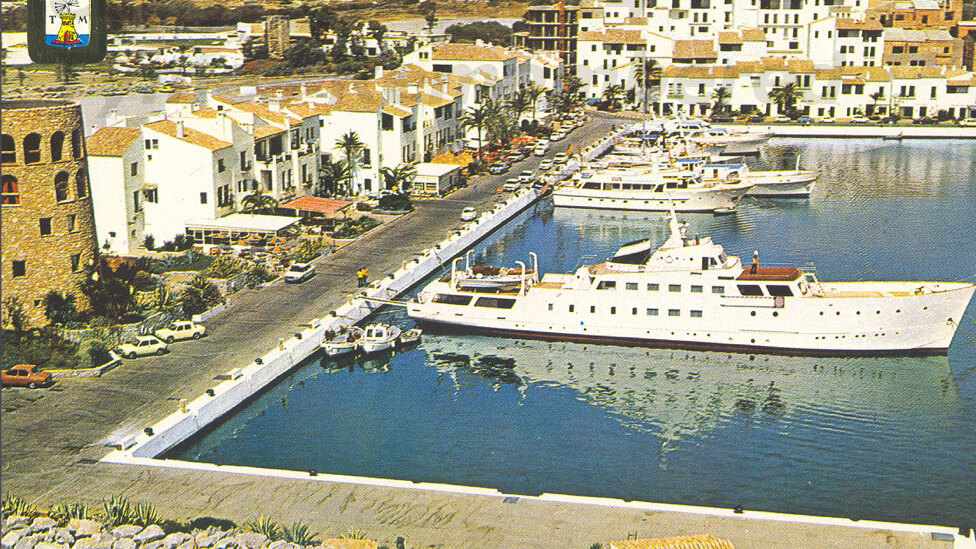
Marbella wasn‚Äôt built in a day ‚ÄĒ The history behind our beautiful city
· by Ermira Buja · 8 min. read
Life in Marbella may seem glamorous and effortless, but its history tells a much deeper story. Romans, Phoenicians, Arabs, Christians… each era has left its mark. As the saying goes: Rome wasn’t built in a day.
Ancient origins: Phoenicians, Romans, and Arabs
- Archaeological discoveries have revealed a necropolis, proving that the area has been continuously inhabited for centuries.
- Under Arab rule, the city was known as Marbal-la. In the 10th century, a fortress with watchtowers was built to protect the region.
- In 1485, Marbella surrendered to the Christian conquest.
From sugar cane to early urban development
- In the 17th century, sugar cane cultivation became an important industry. Around the same time, the San Luis Fort was built, where Hotel El Fuerte stands today.
- By the 19th century, an agricultural colony was established in what we now know as San Pedro de Alc√°ntara.
The 20th century: tourism and high society arrive
- Marbella’s first hotels opened in the early 20th century: Hotel Comercial in 1918 and Hotel Miramar in 1934, both attracting elite visitors.
- During the Spanish Civil War, the town suffered fires and destruction, leaving the post-war population at only 900 people.
- In 1946, Marquis of Ivanrey Ricardo Soriano and his nephew, German Prince Maximilian von Hohenlohe, visited Marbella and fell in love with the La Concha area. They began acquiring land the following year.
- Alfonso von Hohenlohe, educated in agriculture in the U.S., sold plots to prominent European friends, cementing Marbella’s reputation as a luxury destination.
- His 1955 wedding to Princess Ira von F√ľrstenberg became a landmark event, putting Marbella firmly on the map of international high society.
- He later transformed a U.S.-style motel into the now iconic , enforcing strict tranquility rules such as no radio or television.
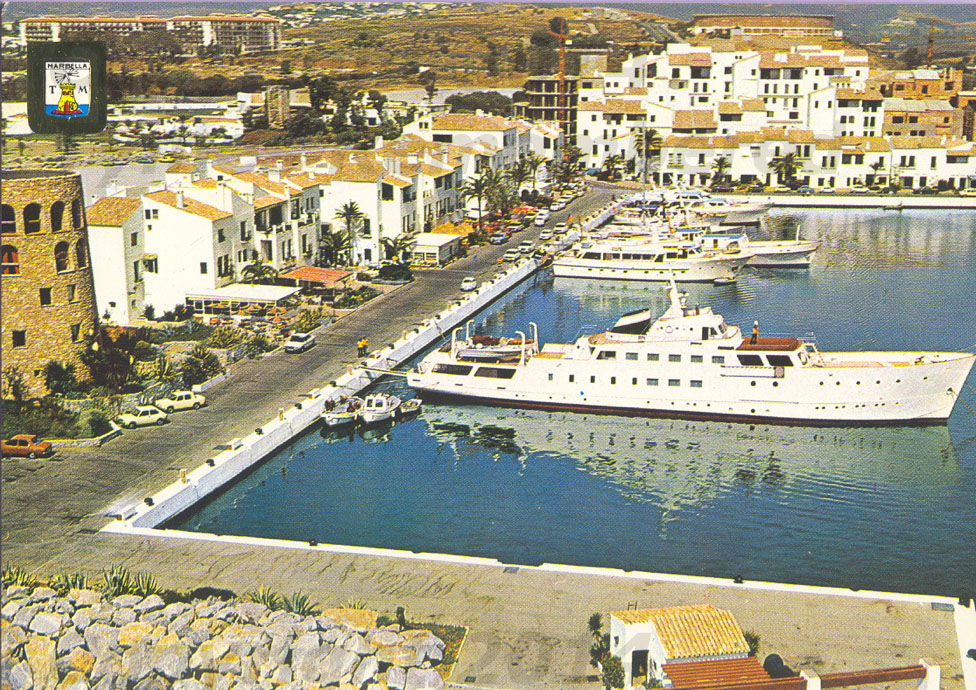
The ‚ÄúPioneer‚ÄĚ: Jes√ļs Gil and Marbella‚Äôs transformation
- Jes√ļs Gil, businessman, controversial figure, and former president of Atl√©tico de Madrid, served as Marbella‚Äôs mayor from 1991 to 2002.
- His flamboyant, populist style ‚ÄĒ combined with connections in entertainment and politics ‚ÄĒ made him both admired and criticized.
- Gil promoted urban beautification campaigns: painting streets white and blue, restoring facades, upgrading infrastructure, and attracting investment.
- While his administration was tainted by corruption scandals, many credit Marbella’s rapid growth in the 1990s to his ambition and political vision.
- In 2019, HBO Spain released a docuseries titled El Pionero (The Pioneer), based on his life.
From farming village to luxury destination in under 50 years
In less than half a century, Marbella evolved from a rural village into a global luxury hotspot. Today it boasts:
- Mild climate and over 26 km of coastline
- Scenic mountains such as Sierra Blanca
- Prestigious 5-star hotels and international resorts
- An exclusive print museum with around 4,000 works by Spanish masters such as Picasso, Chillida, and Dalí, housed in a 16th-century Moorish-style building
Did you know…?
Claudia Schiffer is a regular visitor.
George Clooney bought a property for ‚ā¨4 million in The Marbella Club Golf Resort.
Antonio Banderas and Melanie Griffith purchased a villa in Los Monteros in 1997.
Lord Alan Sugar owns a beachfront house on the Golden Mile.
Sean Connery was once a Marbella resident.
Dani García, a world-famous chef, lives here.
Simon Cowell has a family residence in Marbella.
Rumor has it Rod Stewart and Hugh Grant live near the Russian President’s newly acquired Marbella residence.
Thinking about buying property in Marbella? Some of these names could be your neighbors. At ļ£Ĺ«¬“¬◊, we guide you to the best opportunities ‚ÄĒ even those not listed publicly.
During the Spanish civil war, Marbella suffered greatly with many buildings burning to the ground. After WWII, Marbella was a small village with just 900 inhabitants. In 1946 the Marquis of Ivanrey, Ricardo Soriano, and his nephew German Prince Maximilian von Hohenlohe visited Marbella and instantly fell in love with the La Concha Mountain. The following year, Maximilian sent his son, Alfonso to purchase substantial land around it. Shortly after he built a house for his family and sold neighbouring plots to his notorious friends from Rothschild and Thyssen families.
Previously to this endeavour, Alfonso studied agriculture in the US and quickly became the socialite and part of the jet set. This social flare was an attribute to Marbella’s future success. Alfonso’s mother was a Spanish marquesa, her royal upbringing gave Alfonso access to top connections amongst Europe’s elite; personalities such as: Ava Gardner, Grace Kelly, Audrey Hepburn, Brigitte Bardot, Cary Grant and Laurence Olivier used to stay at the club on what’s now called The Golden Mile.
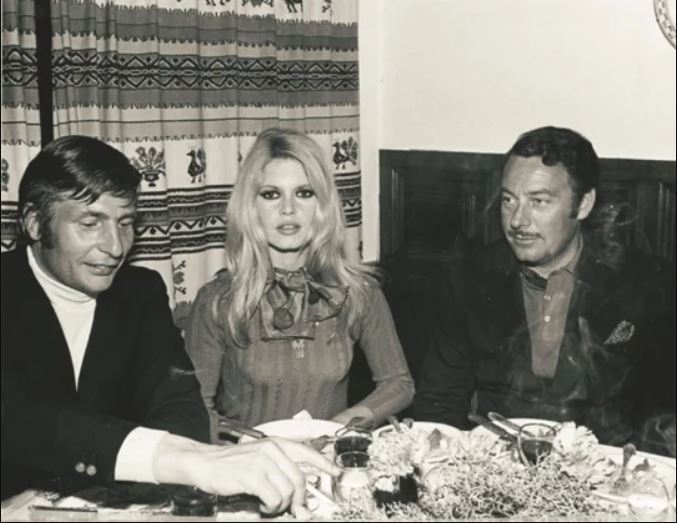
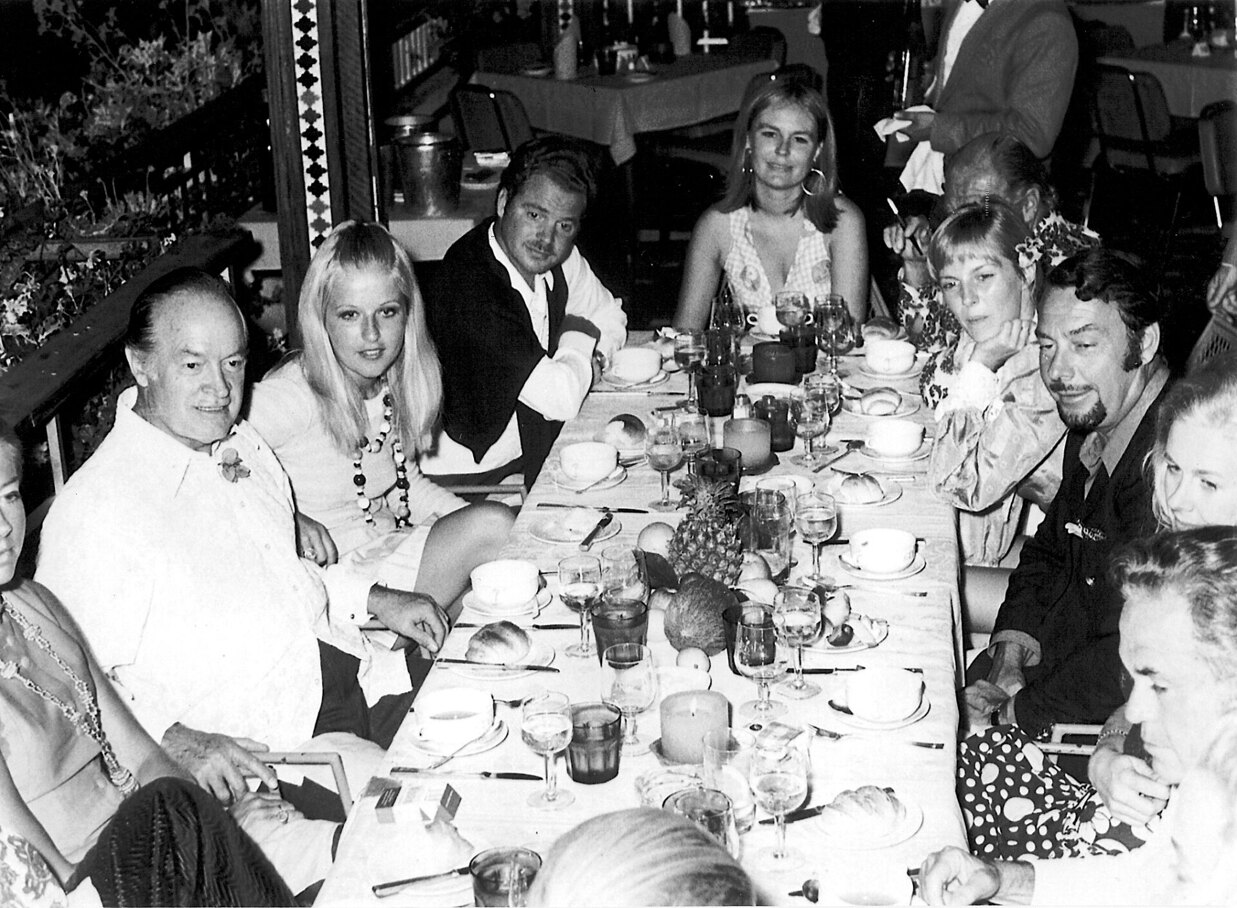
Imagine the guest list when Alfonso married princess Ira von F√ľrstenberg and hosted the wedding at their new residence in 1955. This subsequently became the first Marbella campaign, that led to its discovery by the worlds nobility and celebrities kick starting Marbella as a luxury resort and putting it on the map as a travel destination. The event claimed to gather ‚Äúthe biggest assembly of central European nobility since the war‚ÄĚ.
Soon enough Alfonso realised the potential and purchased a 20 bedroom, American style Motel that was overbooked rapidly. A clear need for help in development had arisen. The aim was to convert a guest house into a professional, luxurious hotel. Alfonso knew he couldn’t do it alone, so he enlisted his cousin, Count Rudi, a Swiss hotel school graduate.
The new era of Marbella Club began. The resort boasted a certain tranquility, a rule of no radio and no television was imposed for the sake of preserving peacefulness of the resort.
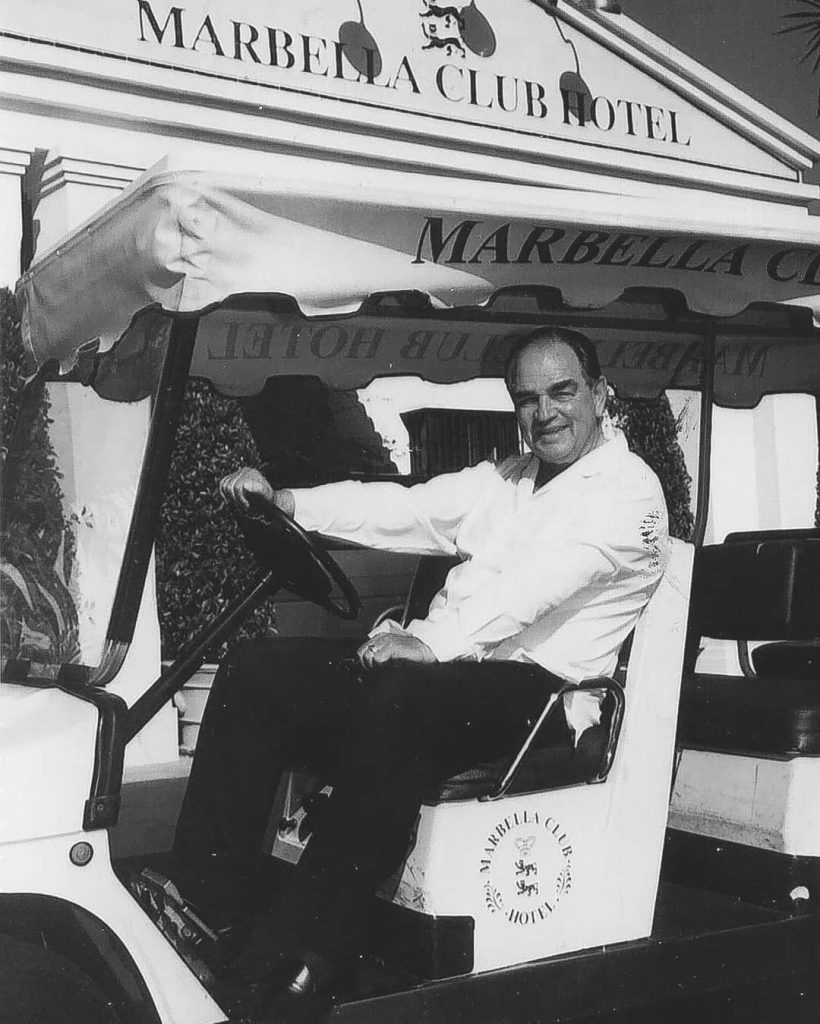
In 2014 the hotel celebrated its 60th anniversary with big party and a book called ‚ÄúMarbella Club, 60 years of history‚ÄĚ. The club offers 37 guest rooms and 78 suites.Alfonso died in 2003, having sold his shares in the hotel back in the 1990s and moved to Ronda to make wine. Marbella Club Hotel to this day, is an epitome of old Hollywood glamour.
The Pioneer
Who is the person behind Marbella’s uplift?
Former mayor of Marbella, Jesus Gil was a business tycoon (construction) and controversial chairman of Atletico Madrid football club. A man of brusque character and extremely right-wing views, Gil encouraged wealthy British, Russian and Italian criminals to come and live in Marbella in the 1970s and 80s.
Although it is well known that he was corrupt, he was also very well-connected (then-resident Sean Connery supported his political campaigns) and many credit him with making Marbella the hugely successful high-end resort it is today (albeit now, thankfully, violence-free).
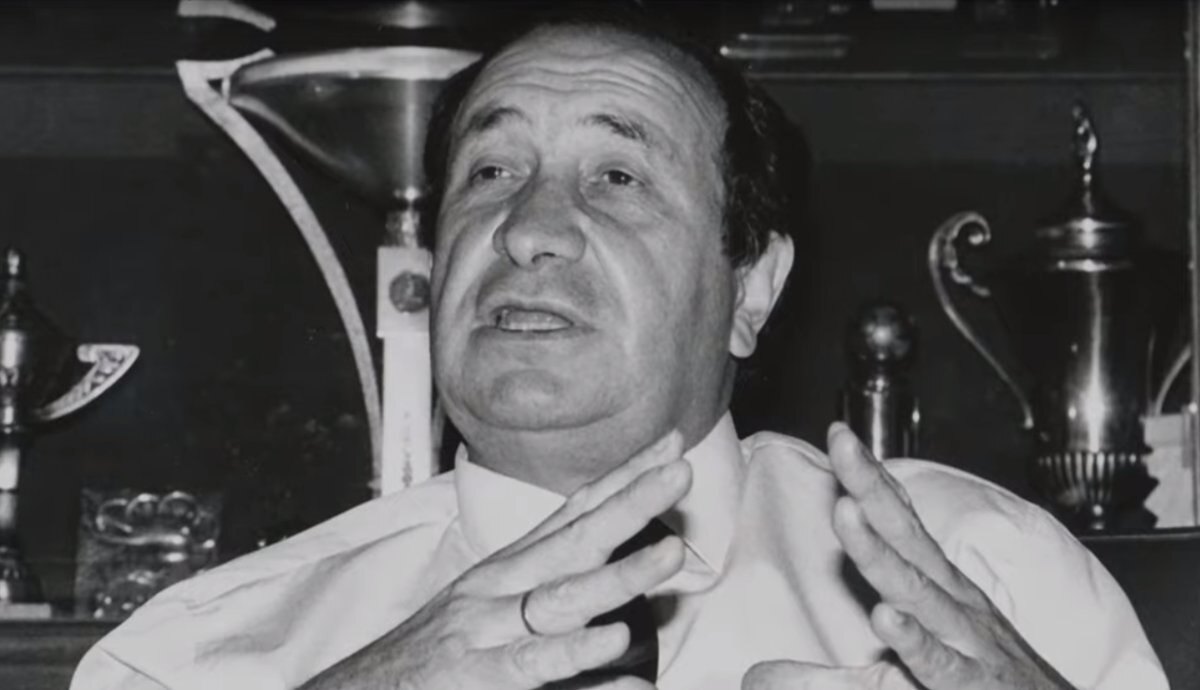
In 1995 Gil led his first loudly successful campaign to clean up and promote Marbella. His agenda included painting the town in white and blue, cleaning the streets and begin to promote Marbella internationally. Having accomplished his goals, he rose in popularity, which led to his re-election.
Gil was responsible for the complete renovation of Marbella. He repaired severely deficient infrastructure, arranged new landscaping, public art and improved public services, as well as attracted an incredible array of investors and personalities to Marbella. It was ‚Äúshow business‚ÄĚ like Marbella never seen before.
Marbella’s most infamous mayor was as divisive as he was popular. On one hand it is generally acknowledged that his corrupt way of doing business harmed the region. On the other hand, Marbella’s growth and success in the late 1990s has often been attributed to his work and passion in beautifying the town and returning it to its former glory. Let it not be ignored that Gil was elected to this office a total of three times.
‚ÄúHBO Espa√Īa‚ÄĚ creating a whole contemporary docu-series around his business and personal endeavours: ‚ÄėEl Pionero‚Äô ‚Äď a four part documentary- drama of Jesus Gil, aired in 2019, directed by Enric Bach. ‚ÄúWe are not used to facing up in such a stark and direct way to the portrayal of a person as amoral and complex as Jes√ļs Gil,‚ÄĚ Bach stated in a recent interview.
In less than 50 years, Marbella transformed from a small agricultural village into an international tourist destination. This location boasts a uniquely mild climate, 26 kilometres of attractive beaches, breath-taking mountains, such as Sierra Blanca, and high-end hotels.
Marbella keeps its own private and only engraving collection in Museo del Grabado, a 16th century Moorish style castle, which holds 4,000 engravings, etchings, lithographs and graphics by some of Spain’s best artists such as Piccaso, Chillida and Dali.
Conclusion
Marbella is much more than beaches, sunshine, and glamour. It is the product of centuries of cultural, strategic, and social evolution. Each era contributed to its unique character. And while it now shines as a world-class luxury destination, Marbella still honors its ancient roots.
At ļ£Ĺ«¬“¬◊, we don‚Äôt just tell Marbella‚Äôs story ‚ÄĒ we help you become part of it. Whether you‚Äôre looking for a holiday home, a luxury investment, or a permanent move, our expert team connects you with the very best opportunities on the Costa del Sol.
